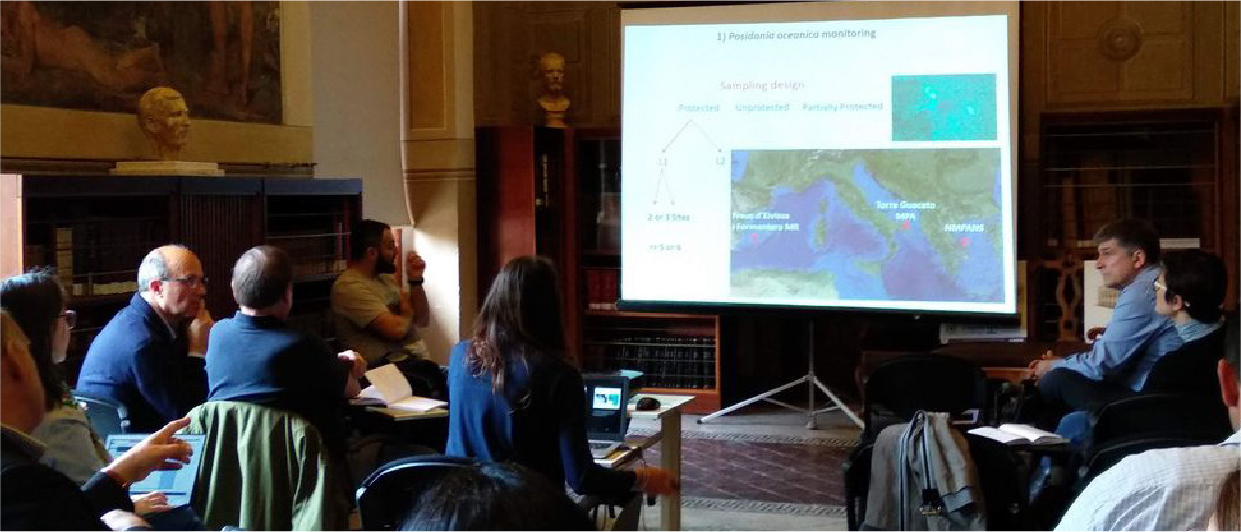 MANAGEMENT TOOL
MANAGEMENT TOOL
Guidelines for drafting a standard Marine Protected Area Management Plan
TO WHOM IS ADDRESSED?
Marine Protected Area (MPA) managersTHEME
Ecosystem approach, MPA managementKEYWORDS
Conservation targets, management, Marine Protected Area, MPA

WHAT PROBLEM WOULD THIS SOLVE?
The existing international context, represented by the Convention on Biological Diversity (CBD) and the Barcelona Convention – SPAMI Protocol of the UNEP-Mediterranean Action Plan, among others, requires that MPAs apply governance models that ensure their effectiveness in reaching the established conservation targets. The purpose of these Guidelines, developed by the AMAre project, is to provide standard models for the governance and management of Mediterranean MPAs, to improve their effectiveness, as well as to support the establishment of a network of MPAs.

WHAT IS NEEDED FOR IMPLEMENTATION?
Technological infrastructure
Some software can be used to draw the Conceptual Model: Microsoft Visio, Open Office Draw, Miradi, or any other open-source technology stack for building diagramming applications such as www.draw.io.
Training
Training activities are recommended for MPA staff and regional protected area managers, on the methodology to be applied for drafting standard management plans.
Investment
No investments are clearly identified at the outset; rather, the Management plan should include an estimation of the costs associated with each activity envisaged, as well as the monitoring costs.

HOW TO USE IT?
Concept
Standardisation is the sharing of a common language between node managers (directors) and network managers (public administration, consortia), to evaluate and compare the results of an action. It is not a limitation to the management action itself. In fact, every single area is adaptively managed at the local level, but the distribution and dissemination of the results must necessarily operate in a standardised manner. This approach helps to preserve biodiversity by making clear the conservation action that is taking place.
At the heart of the Guidelines lies the Conceptual Model, which is a diagram that represents the relationships between the main drivers and pressures that have an impact on one or more identified Key Targets of conservation (KTs), e.g., species, species groups, ecological systems such as habitats, or ecological or cultural processes. The first step is to identify the KTs, their pressures and drivers; strategies are then chosen, and actions are selected to reduce the risks to which KTs are exposed.
Recommended implementation frequency
The Guidelines should be prepared in five subsequent steps: (1) conceptualisation, (2) planning of the actions & monitoring, (3) implementation, (4) analysis/adaptation, and (5) sharing. These actions describe an iterative, participatory process that includes the identification of conservation targets, a threat analysis, the determination of actions, the monitoring plan, an analysis of the effectiveness of the actions, communication and adaptive management.

WHAT CHALLENGES MAY ARISE?
The knowledge level and the legal processes may be improved through periodic interface between regional level, managers, technicians, practitioners.
Pilot areas
Freus d’Eivissa i Formentera – Balearic Islands (Spain); Porto Cesareo Marine Protected Area (Italy); Sporades (Greece); The North-East Marine Protected Area – Maltese Islands (Malta);
Torre Guaceto Marine Protected Area (Italy).

WHAT ARE THE EXPECTED RESULTS?
Quantitative results
The expected results of the implementation of these Guidelines lie in the adoption of a standard MPA management plan, following the envisaged iterative, participatory and adaptive approach.
Transfer potential
These Guidelines support the establishment of standard management plans across all Mediterranean MPAs. The adoption of a common management approach at the Mediterranean level is expected to yield the following benefits:
- Assessment of biodiversity values, favourable conservation status of habitats with common indicators.
- Clustering of main threats or pressure factors to implement regional mitigation strategies.
- Implementation of network strategies to increase effectiveness and optimise costs.
- Empowerment of management bodies – From public officials to practitioners.
- Persuading politicians, funders and stakeholders that the results are tangible.
- Increase the management effectiveness of regional networks by identifying improvement actions.
For further information
Project contact: AMAre
Links of interest
Partners
- Corsican Agency for Environment (OEC)
- Euro-Mediterranean Centre on Climate Change – CMCC
- French Research Institute for Exploitation of the Sea, Department of Oceanography and Ecosystem Dynamics (IFREMER)
- Hellenic Centre for Marine Research
- Management Body of The National Marine Park of Alonissos Northern Sporades
- Management Consortium of Torre Guaceto
- National Research Council, Institute of Marine Science – CNR-ISMAR
- Regional Government of the Balearic Islands – Department of Environment, Agriculture and Fisheries
- Spanish National Research Council (CSIC)
- University of Malta






